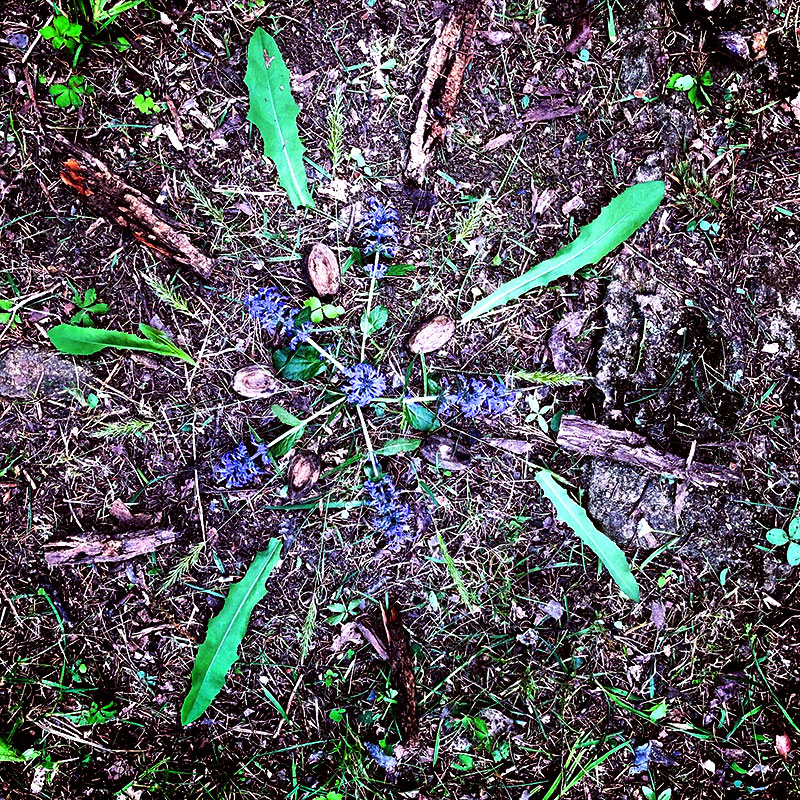
https://www.hobbyfarms.com/spring-forage-fare/When I spend time in nature, it automatically ignites in me a sense of wonder and creativity. Making mandalas from objects found in nature is a great way to channel that energy and interact with the landscape in a more intimate way. Mandala making is a great project you can do alone or with your family—it’s great for any age.
What Are Mandalas?
Loosely translated, mandala is a Sanskrit word meaning “circle.” The mandalas you might think of in modern culture are circular drawings of geometric shapes. However, people around the world have have a long history of practicing the the art of mandala making, including Tibetan monks who create mandalas from the sand of precious stones as well as Native Americans who construct medicine wheels using healing herbs.
But mandalas aren’t just human-made creations. They are a common theme in nature. Picture a daisy, a spider web, the slice of a lemon, your eye—mandalas can be found just about anywhere. In fact, many people believe that the practice of mandala making helps connect us to the natural world.
A Meditation in Nature
Think of your mandala-making experience as a mindfulness meditation. We often picture meditation as sitting perfectly still on a cushion or mat, but in fact, for many people, a moving meditation can be much more effective in helping release anxiety, clear the mind and be more present. Let go of the need to create the perfect design, and let your surroundings be your guide. Small children are particularly good at this because they can easily become amused by a leaf or a flower. Take their cue and simply bask in the beauty around you, even if it means you never get to the mandala making.
If you do this activity with kids, use it as a learning opportunity. With little ones, talk about colors, shapes and patterns you see in the natural world, or practice counting and sorting the materials. With older kids, you can talk about the plants, the ecosystems that they grow in, their growing requirements and how we might use them.
Collect Your Mandala Materials
All you need to start making a mandala is find your materials—and that is half the fun of this project. Set aside a significant amount of time for collection, whether that’s 10 minutes or an hour. I like to collect my materials in a basket woven from natural materials so that they don’t wilt as I’m collecting, but a canvas tote or even a zipper-lock bag will work.
As you begin on your search, look for materials of varying sizes, shapes and colors. Try to pick up six to 10 pieces of each material, as repetition is part of what makes a mandala unique. You might collect leaves and flower petals from your garden, or if you’re up for a longer adventure, grab a field guide and forage from a wild area on your property or a park. Leaves and petals make bold choices for mandala creation, but don’t overlook peeled bark, sticks, nut shells, stones, feathers and even bugs.
Practice responsible foraging, and pick only from plentiful stands of wildflowers and plants. If you’re on public property, respect the guidelines set forth by the park. I like to collect leaves and petals that were blown to the ground after a storm or windy day, but there’s also a time and place for collecting living plants if you do so responsibly.
If you think ahead, you can even collect materials for a rainy-day mandala-making project indoors. If needed, dry the materials to preserve them for later use.
Make Your Nature Mandala
Once you’ve collected your materials, it’s time to let your creative energies roll. I like to do this outdoors. There’s a sitting area beside our pond that lends the perfect soundscape for getting in the mandala-making frame of mind. For you this could be a field, a trail or your front porch.
Begin by placing your materials, starting from the inside and working your way out in a circular pattern. Your design should be pleasing to you, but don’t get caught up in making the perfect final product. The wind might blow your pattern or a small child might not get the concept of a mandala. Simply enjoy the process of creation. Spending time in nature with your family, being creative and practicing mindfulness are all way more meaningful takeaways than capturing an Instagram-worthy photo.
If you are working with small children, you might want to scrap the mandala concept and make a picture with your materials instead. Depending on the age of your child, the picture might be quite abstract—and that’s OK!
Your Takeaway
This is a great activity to revisit in different seasons and in different natural environments. Compare and contrast how your creations change in color and pattern depending where you are and when you make them.
Bear in mind that nature mandalas are impermanent creations. Snap a picture if you want to document your work, but find freedom in leaving it to the natural elements, visiting it from time to time until the wind, a wild animal or another person has other plans for it.




